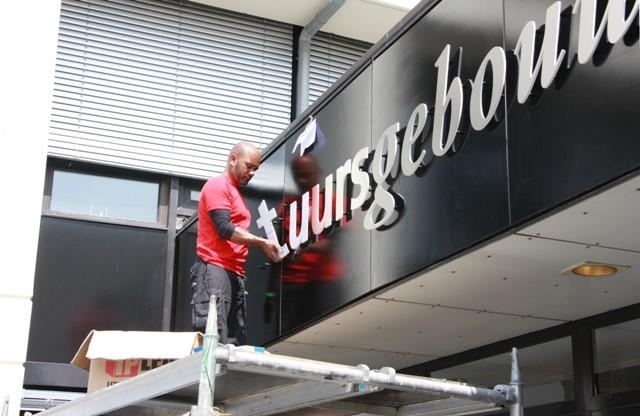Corporate Office council worried about Administration Building's redesign

This summer, the Administration Building will be renovated to accommodate the Corporate Office’s new activity-based and location-independent way of working. From September on, nearly all employees who work in the Administration Building will no longer have a workspace of their own. Instead, they’ll have to find a workspace that fits the tasks they have scheduled for that day. That doesn’t necessarily have to be inside the building: employees can work in another university building, or even at home.
This new way of working will save the Corporate Office some 3,000 square metres, which is nearly an entire wing of the building. The space saves will then be let to UMC Utrecht, which is looking for temporary housing during the upcoming renovations of the hospital.
The Corporate Office Council first discussed these plans in the beginning of February. Although the council knew that ‘flex-working’ would be a hot topic for the Corporate Office this year, the size and details of the plan came as a surprise to many. For that reason, an additional meeting was held on March 2. Many Corporate Office employees attended. In the meeting, the council submitted their questions to the Corporate Office Director and some project group members. The council also asked for two guarantees: first, that no one would be required to work from home; and secondly, that a ‘concentration workspace’ would be available to anyone who wanted one.
More communication
The questions showed that many Corporate Office employees weren’t informed well, or at all, about the plans, which caused some unrest. “We’ve heard that people feel like they’re being confronted with a fait accompli”, says Laura Hendricx, member of the Corporate Office council. “A workplace is an emotional place".
"What I’m missing in this plan is how this will be communicated. I’m also missing a clear picture of what it’ll be like to work in that new way. Many people don’t know to what extent managers and teams can still influence the plan”, added colleague Hanneke Poels. “Colleagues turn to us with their questions, but we don’t have the answers", complained Bobby Baidjnath Misier, president of the council.
In summary, the Corporate Office employees want to know what the new way of working and the flex places will look like in practice. A clear answer can’t be given yet, replied the members of the group behind the project. To get a clearer view of how the Corporate Office staff would like to work from September onwards, a questionnaire has been sent out. The answers will form the foundation for the interior design of the building.
The council says some colleagues never filled out the questionnaire because, after a full year of working from home, they have no idea what their work will look like in September. The council members also says that existing work routines aren’t taken into account enough, nor is the atmosphere that colleagues within a team have created together.
Not set in stone
Fiona van ‘t Hullenaar, Director of Corporate Real Estate & Campus and member of the project team, says the average employee of an institution like the university is “less open to change than employees at commercial organisations”. Improved communication should relieve some of the concerns. “Besides, the changes aren’t set in stone. If a certain method doesn’t work, or you don’t end up with the right colleagues, that can be changed”.
The director has plenty of experience. Corporate Real Estate & Campus, alongside the Facilities Service Centre, has already implemented this new way of working, and has cut back on its use of space as a result. “We made an agreement that you weren’t allowed to complain for the first hundred days. That way, we could give the new way of working a fair chance, and everyone had time to get used to it. After that, we let everyone voice their objections, and adjusted some things”.
An empty desk
The council received a lot of questions about practical details concerning flex working. How do you know which desks are available? How do you know where your colleagues are? What do you do with your things if you have to leave your desk for a minute?
The project group replied that perhaps an app can be developed to show where the empty desks and the colleagues are. Leon van de Zande, General Director of the Corporate Office, ensured that no one will be required to work from home. Van ‘t Hullenaar added that there will be plenty of workspaces in the Administration Building for everyone who wants to work in the office. However, they couldn’t promise that everyone who wants a ‘concentration workspace’ will get one.
The project group acknowledges that spreading the crowds throughout the building will be a challenge. Before the intelligent lockdown forced everyone to work from home, Tuesdays and Thursdays were the busiest days, and Wednesday and Friday afternoons were the quietest times. How the project group plans to encourage the Corporate Office staff to work on different days is a question that needs to be answered on a management level and per team, the project group says. That will take quite some effort, the members realise.
All questions and answers can be found on the Corporate Office council website, which students and employees can access with a Solis-id. The plans for the new way of working in the Administration Building are explained on the Intranet – only accessible to employees with a Solis-id. An FAQ page will soon be added.